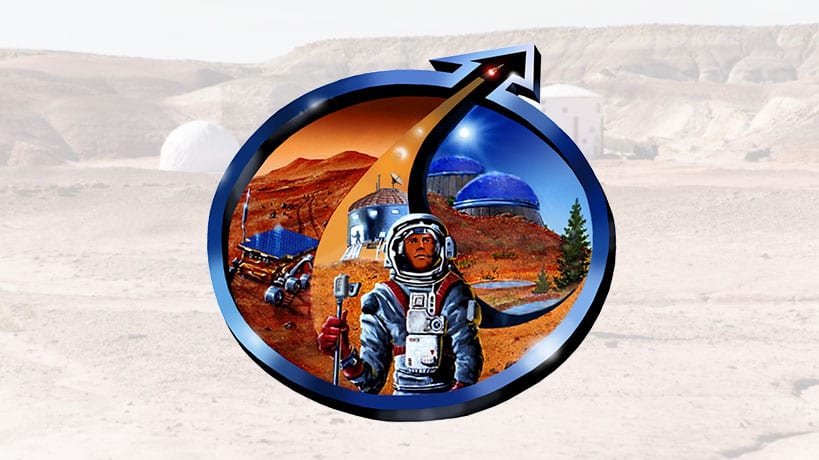
By Robert Zubrin
SpaceNews, 03.30.18
The recent amazing success of the Falcon Heavy launch offers America an unprecedented opportunity to break the stagnation that has  afflicted its human spaceflight program for decades. In short, the moon is now within reach.
afflicted its human spaceflight program for decades. In short, the moon is now within reach.
Here’s how the mission plan could work. The Falcon Heavy can lift 60 tons to low Earth orbit (LEO). Starting from that point, a hydrogen/oxygen rocket-propelled cargo lander could deliver 12 tons of payload to the lunar surface.
We therefore proceed by sending two such landers to our planned base location. The best place for it would be at one of the poles, because there are spots at both lunar poles where sunlight is accessible all the time, as well as permanently shadowed craters nearby where water ice has accumulated. Such ice could be electrolyzed to make hydrogen-oxygen rocket propellant, to fuel both Earth-return vehicles as well as flying rocket vehicles that would provide the lunar base’s crew with exploratory access to most of the rest of the moon.
The first cargo lander carries a load of equipment, including a solar panel array, high-data-rate communications gear, a microwave power-beaming set up with a range of 100 kilometers, an electrolysis/refrigeration unit, two crew vehicles, a trailer, and a group of tele-operated robotic rovers. After landing, some of the rovers are used to set up the solar array and communications system, while others are used to scout out the landing area in detail, putting down radio beacons on the precise target locations for the landings to follow.
The second cargo lander brings out a 12-ton habitation module, loaded with food, spare spacesuits, scientific equipment, tools, and other supplies. This will serve as the astronauts’ house, laboratory, and workshop of the moon. Once it has landed, the rovers hook it up to the power supply and all systems are checked out. This done, the rovers are redeployed to do detailed photography of the base area and its surroundings. All this data is sent back to Earth, to aid mission planners and the science and engineering support teams, and ultimately forming the basis of a virtual reality program that will allow millions of members of the public to participate in the missions as well.
The base now being operational, it is time to send the first crew. A Falcon Heavy is used to deliver another cargo lander to orbit, whose payload consists of a fully fueled Lunar Excursion Vehicle (LEV). This craft consists of a two-ton cabin like that used by the Apollo-era Lunar Excursion Module mounted on a one-ton hydrogen/oxygen propulsion system filled with nine tons of propellant, capable of delivering it from the lunar surface to Earth orbit. A human-rated Falcon 9 rocket then lifts the crew in a Dragon capsule to LEO where they transfer to the LEV. Then the cargo lander takes the LEV, with the crew aboard, to the moon, while the Dragon remains behind in LEO.
To read the full commentary, please click here.
Dr. Robert Zubrin is the President & Founder of the Mars Society and President of Pioneer Astronautics.